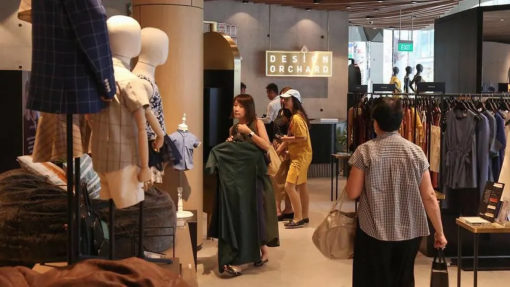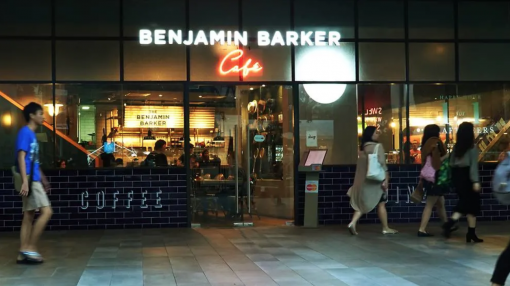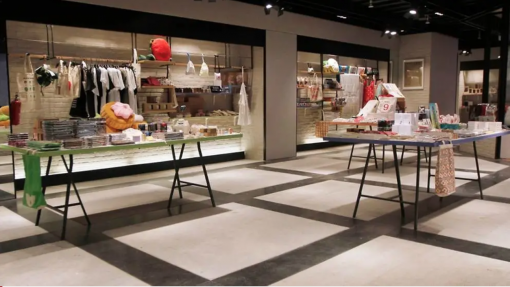While digital has not yet killed the retail star, there is more that needs to be done for retailers to avoid the chopping block and give customers a reason to spend money at their shops. (Photo: TODAY/Najeer Yusof)
By Ng Jun Sen (/author/11592060)
30 Dec 2019 06:25AM
(Updated: 30 Dec 2019 06:30PM)
SINGAPORE: At a time when most brick-and-mortar retailers were trying to digitise their stores and start selling online, multi-label design retailer Naiise did the complete opposite.
Despite starting out as an online-only seller in 2013, the rm soon launched a physical retail store in Westgate mall in Jurong two years later, the rst of several outlets to come, and became one of the few retailers in recent times to move from clicks to bricks.
The risky move paid off for the homegrown business, which recorded an average of 20 per cent year-on-year increase in traffic across its five Singapore stores, its founder Dennis Tay said. This includes its two newly opened shop spaces in Jewel Changi Airport and Paya Lebar Quarter this year.
Regarded as a retail darling in Singapore’s crowded scene, the firm also operates the first level of Design Orchard, a showcase mall at the heart of the Orchard Road shopping belt jointly developed by three agencies — Singapore Tourism Board, JTC Corporation and Enterprise Singapore.
“We believe there is still room for growth for individual (retail) players if we can innovate and keep up with consumer preferences and tastes,” said Mr Tay.
Yet, Naiise’s continued expansion and Mr Tay’s optimism are the exceptions rather than the rule in the retail sector which has been pummeled in recent years.
Excluding the sales of motor vehicles, the retail industry is mired in a decline over nine consecutive months as of October, with most categories of retailers seeing a fall in sales takings, based on the latest data from the Department of Statistics.
While some retailers interviewed enjoyed brisk sales this month amid the festive season, experts said that from a macro view, the retail sector has in fact been going through a slump for at least three years now.
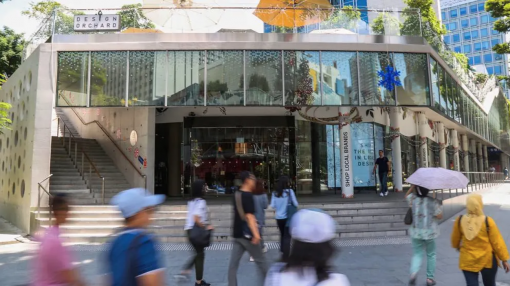
Multi-label design retailer Naiise is regarded as a retail darling in Singapore. The firm operates the first level of Design Orchard, a showcase mall at the heart of the Orchard Road shopping belt. Photo: TODAY/Najeer Yusof
Left in its wake are shuttered physical retail outlets and “omni-channel” businesses that had primarily operated out of storefronts.
These business casualties had mostly targeted the mall-crawling masses, and sold a wide variety of brands, not just their own. They were also neither market leaders in their respective segments, nor were they mom-and-pop stores that operated out of residential neighbourhoods.
Retail household names who downsized their operations include food outlets such as Sakae Sushi; bookstores including MPH and Kinokuniya; furniture retailer Crate & Barrel; travel retailer DFS Group; and a host of departmental stores such as Isetan, Metro, Marks & Spencer and Mustafa.
Several left the scene completely. American beauty products retailer Crabtree & Evelyn closed all its physical stores in Singapore, British preppy fashion label Jack Wills announced its pullout, and longtime homegrown IT retailer Newstead went into liquidation.
Beauty products chain retailer Sasa and home improvement store Home-fix were the latest to bite the dust.
So, what is causing these retailers — which had enjoyed success over the years to become familiar names to Singapore shoppers — to now feel the squeeze? And what is the secret ingredient that allows some, like Naiise, to weather the retail storm?
Unlike what many would think, the answer to both questions is not “e-commerce” alone, several analysts and business leaders said that retail accounted for less than 5 per cent of total sales last year.
But while digital has not yet killed the retail star, there is more that needs to be done for retailers to avoid the chopping block and give customers a reason to come back and spend their money at the shop, they added.
THE RETAIL SLUMP: A PERFECT STORM?
After the last financial crisis in 2009, Singapore’s economy and household incomes had recovered steadily at a compounded annual growth rate (CAGR) of 4.6 and 4.5 per cent respectively over the decade.
But in these 10 years, the growth of retail sales and the food and beverage services did not keep in step, growing by a CAGR of 1.6 and 1.8 per cent respectively, according to a report by real estate consultancy Edmund Tie & Company.
This period coincided with the rise of e-commerce and mobile devices, which gave consumers the ability to shop around the clock, greater convenience, increased access to product information and reviews, lower prices and more choices.
More recently, experts point to the ongoing weaker economy here as well as globally, which means Singaporeans are more likely to tighten their purse strings when it comes to shopping for non-essentials, while tourist receipts also tumble.
Mr Alan Cheong, executive director of research and consultancy at Savills Singapore, said the current woes afflicting the retail industry are structural, both from the demand and supply sides.
The worst performers are those in mainstream retail segments, such as apparel, department stores, furniture, household appliances, books and gifts.
In these segments, offline retailers face the full force from online competitors, which do not need to manage retail display space and possess an advantage in having a more efficient supply chain management, said Mr Cheong.
The rise of budget air travel has also affected the shops here.
Said Mr Cheong: “One often ignored factor affecting retail and F&B is budget air travel. This is making cheaper regional cities accessible not only for tourists who visit Singapore in their itinerary, but also Singaporeans who take a portion of their discretionary spending overseas.
“Visitors are deferring their purchases during their vacations till they arrive at countries that are cheaper. The profile of tourists these days is one where they treat Singapore as a must-visit destination, but knowing from friends or online blogs that Singapore is not a cheap place to stay or shop, they shorten their stay and spend the bare minimum here.”

Customers wait at an AirAsia ticket counter at Kuala Lumpur International Airport in Sepang, Malaysia, Mar 7, 2016. (Photo: Reuters/Olivia Harris)
The retail sector today has to contend with narrower margins when consumers are able to buy goods that offer the same or better value online or overseas, said Dr Lee Nai Jia, head of research at Knight Frank Singapore.
Said Dr Lee: “Retail sales will likely remain subdued looking ahead, although improvements in the economy may help push up sales. The retail sector is undergoing structural changes in its business models, marketing efforts and customer engagement initiatives, and it may take some time before the market picks up.”
There are also other supply-side reasons for the slump, including higher operating costs for retailers today. This includes the perennial issue of labour and rent costs.
Unlike the smaller heartland retailers which are typically family-run, larger retailers are highly reliant on being able to employ competent sales staff, said experts. Good retail service is a strong differentiating factor from e-commerce competitors.
The Customer Satisfaction Index of Singapore, a national study conducted by the Institute of Service Excellence within the Singapore Management University, has continued to climb in recent years, growing from 71.7 for the retail industry in 2016 to 72.6 in 2018. This figure includes both physical and e-commerce.
However, a breakdown of the index shows that between 2016 and 2018, the average service level scores by e-commerce retailers had exceeded department stores here. Duty free chain DFS Group was consistently the best performer among the department stores, and its downsizing could shift the overall scores in favour of e-commerce in the future.
One recent policy change that will likely pressure retailers further is the impending restrictions on foreign workers for the services sector, which includes workers in retail trade and F&B, to ensure that Singaporeans continue to have good jobs and opportunities.
In Budget 2019, the Government announced that it is tightening the dependency ratio ceiling, or the proportion of foreign workers a firm can employ, from 40 per cent to 38 per cent on Jan 1 next year, and to 35 per cent on Jan 1, 2021.
THE PROBLEM OF RENT
When it comes to rent, Colliers International Singapore’s head of research Tricia Song said it has always been a significant cost consideration for retailers.
Since the first quarter of 2015, rent had been on a general decline, even though it picked up slightly in recent months, based on data from the Urban Redevelopment Authority (URA). URA’s rental index for retail climbed 2.3 per cent in the third quarter of 2019, compared with a decrease of 1.5 per cent in the previous quarter.

The worst performers are those in mainstream retail segments, such as apparel, department stores, furniture, household appliances, books and gifts. (Photo: TODAY/Raj Nadarajan)
Rents make up a relatively large component of retailers’ expenses which eat away at their profits.
One key indicator is the occupancy cost ratio for each retailer, which is defined as the ratio of gross rental including service charge, marketing and promotions, to retail sales.
“Despite lower retail rents compared to, say 2014, sales have also declined, which means occupancy cost ratios may not have declined,” said Ms Song.
Mr Cheong said while the downbeat retail trend has been going on for some time. Despite this, landlords have continued to increase their rental revenue “by optimising various variables” since 2013.
“For instance, they could still improve on the rentals collected by chopping up the larger units to smaller sizes and in turn gain from the higher per square foot rent, or converting the spaces to F&B uses,” he said. “This masked the downtrend and created the false belief that the tenants’ plight is not the landlord’s problem.”
He added: “It was only around 2018 that after all the add-ons and trinkets had been exhausted that everyone began to see that the emperor had no clothes.“
Mr Cheong said today, malls still charge a high base rent with a minimal gross turnover component. Having such a component allows for some flexibility in rents depending on the tenants’ gross sales. But the structural rigidity of mall rents today mean rents are unable to adjust when retailers are undergoing through difficult periods, such as when the economy is bad.
He noted that malls that are not owned by private equity, such as Reits (real estate investment trusts), are more nimble than those which are, in adapting to the retail slump in terms of rent collection.
“If there are structural impediments, then the ability of (private equity-owned) malls to change tack in their rental collection model is akin to that of steering a supertanker. It will take a great deal of effort to change direction,” he said. “Landlords now must have skin in the game with the tenant. In other words, landlords will have to bear part of the retailers’ business risk.”
Still, Ms Song said centrally managed malls — including those owned by Reits — have an edge over strata-titled malls as they are more capable of organising mall-wide promotional and branding activities. They are also able to better attract an “optimal tenant mix” and configure the space of leased areas in order to fit the overall concept for the mall.
For instance, new malls such as Funan Mall, Jewel Changi Airport, and the Paya Lebar Quarter are centrally-managed malls that have incorporated “experiential and first-to-market” elements in them, she said.
Said Ms Song: “Large and experienced mall operators also have better financial strength, scale and expertise to carry out asset enhancement initiatives. Strata-titled malls have different owners and may not act in common interest.”
Malls need to proactively reach out to various retailers and search for new retail concepts, said Mr Ong Choon Fah, chief executive officer of Edmund Tie & Company (South-east Asia), highlighting the efforts of Funan Mall’s owner CapitaLand Mall Trust, which has been proactively engaging customers to understand what retail concepts they desire.
He added that the retail industry is expected to remain weak in 2020, but it is not all doom and gloom for the retail industry.
“We are all social creatures — gathering, meeting and socialising with others, such as family, friends, acquaintances or just to people watch. (Offline shopping) is very much a part of our well-being,” said Mr Ong.
He added: “Just as the telephone and mobile phones did not stop us from socialising physically, malls will continue to have a role – as a place for us to gather and connect. It is not so much the act of buying but the collective experience we share with others in a mall. The curation of the experience, be it at the retailer or mall level, becomes just as, if not more, important than the physical space and the merchandise alone.”
ALL ABOUT THE LIFESTYLE EXPERIENCE
While some malls have proactively sought to attract footfall and help their tenants tide over the slump, retailers also have to do more to innovate against their competition.
To get out of the current rut, some retailers have improved the shopping experience by providing personalised goods and services, or by providing complementary lifestyle services within the shop, said Dr Lee.
Adjunct Associate Professor of marketing Lynda Wee from the Nanyang Business School said some lessons can be learnt from the closure of Sasa and Home-fix.
In Sasa’s case, it was because it did not curate its merchandise and experiences to its target customer segment, and the brands it carried were generally lesser known. Sasa also competed on the basis of discounts, even though online stores offered equally competitive prices.
On Home-Fix’s predicament, apart from the online competition, she wondered if it could have offered offline consultation and advice for do-it-yourself activities, which would have “promoted a sense of exploration and achievement”.
Said Dr Wee: “Offline retail needs to rethink their roles since most of the activities can be done by online retail. Functional, repetitive, transactional (functions) like taking orders can be done online. How about increasing the emotive, through engagement and growing the community using high touch (methods)?”
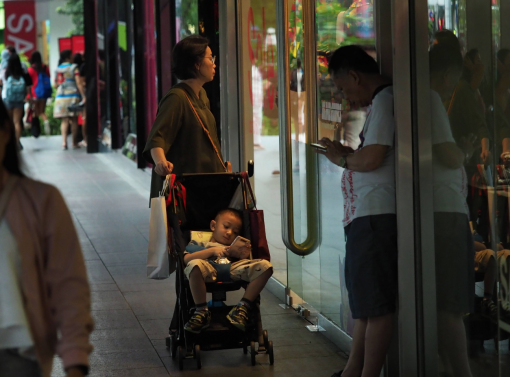
The retail sector has been going through a slump for at least three years now. (Photo: TODAY/Raj Nadarajan)
HOW SOME DO IT
To find out how retail businesses here do it, we spoke to five retailers that have similar market positioning as Sasa and Home-fix in their respective segments.
A clear trend today is the rise of an experiential and activity-based offline retail model, which is what attracts customers to the physical outlet, said the retailers. To this end, technology may also play a part, they added.
The pharmacy Guardian, for instance, regularly partners popular beauty brands and holds regular events, such as a recent series of interactive beauty workshops and activities to celebrate its collaboration with Korean retailer Olive Young at Ion Orchard.
Mr Soren Lauridsen, CEO of Guardian Health and Beauty, said: “In addition, as part of our ongoing efforts in providing our customers with a positive in-store shopping experience, we have been investing in new store refits across our network of stores across Singapore, which we will continue to unveil in the next year.”
One brand which has broadened its appeal and reach is Australian menswear fashion label Benjamin Barker.
In 2014, it launched multi-label store The Assembly which carries menswear brands and lifestyle products other than its own, and also serves coffee and food in a cafe next to the store. It also launched its online store in 2015.
This year, Benjamin Barker managed to increase footfall in its outlets by more than 10 per cent compared with last year. In particular, the holiday season in December netted around 10 to 15 per cent higher receipts than the average in previous months.
Chief operating officer Damien Tan said: “Customer experience is not only the new frontier of competitive differentiation, but also, the future of how brick-and-mortar retailers like ourselves will generate revenue.”
This year, Benjamin Barker managed to increase footfall in its outlets by more than 10 per cent compared with last year. In particular, the holiday season in December netted around 10 to 15 per cent higher receipts than the average in previous months. (Photo: TODAY/Raj Nadarajan)
To ensure a sustainable retail environment in the age of digital disruption, he said it is imperative for retailers to create long-term value which lasts, and to design the appropriate “experience-focused value proposition” for the customer.
But he said that unlike the larger retailers, mid-tier players like Benjamin Barker are still constrained by their financial resources.
“The challenges faced by small and medium-sized enterprises like us is that we do not have the financial ammunition nor infinite resources like the bigger players, so we have to work doubly hard to ensure we continually create great products at a value price point coupled with an unparalleled store experience,” said Mr Tan.
When Naiise opened in 2013, it only carried five brands. Today, it carries 1,068 brands, including around 700 to 800 local ones. (Photo: Naiise)
Naiise’s Mr Tay added that the modern-day offline retail experience is one based on customer engagement, rather than transactional one.
The retailer does not produce its own branded goods, but instead curates and sells designer items produced by local and regional creatives, such as fashion apparel, stationery, home accessories, and beauty products.
At its Jewel Changi Airport store, Naiise achieves a retail experience based on engagement through “rotating thematic pop-ups in store, creative sessions, workshop programmes and value-added services like gift wrapping and F&B”.
This year, it also worked with the Singapore International Film Festival to hold movie screenings for the public.
“All of these offerings provide us with the opportunity to continuously engage, introduce and cross-sell our merchandise to our consumers,” said Mr Tay.
Naiise also introduced heat mapping and tracking video analytics systems into some stores to identify customer flow, hot spots, and dead zones.
“This helps us better visualise a customer’s journey, preferences and highlight areas we can better utilise or improve. Akin to onsite optimisation, these data points help us optimise our offline offerings to be able to drive more value to our customers and help us make better retail design and merchandising decisions,” he added.
OTHER FACTORS FOR SUCCESS
Retailers could also chance their fortunes in riper markets overseas, such as emerging markets where manpower and rent costs are lower.
Several have already done so. Aided by trade promotion agency Enterprise Singapore, homegrown beauty brand Skin Inc had developed an online strategy targeting the Chinese market, such as by setting up online stores on WeChat and Weibo, while also launching new products through Sephora retail stores.
Benjamin Barker had also partnered like-minded franchisees in Cambodia and Malaysia “who believed in the brand and share a similar vision for the growth of the brands in these emerging markets”, said Mr Tan.
But the strategy cannot be online for online’s sake, said the retailers. Rather, new innovations should serve to streamline business operations, improve the customer experience, or to open up a new channel for products to be sold.
Such moves do not always work. When pet services and products retailer Pet Lovers Centre introduced vending machines in various parts of Singapore sometime last year to give its customers added convenience, the move did not pan out well, said its group managing director Ng Whye Hoe.
It was difficult to find an optimum location for the machines at the right price and vendors faced difficulties in replenishing the stocks. Ultimately, Pet Lovers Centre customers still preferred shopping at its brick-and-mortar stores.
The firm remains keen on its strategy to sell across all channels — apart from vending machines, it also has an online store and operates a click-and-collect service.
Said Mr Ng: “Singaporeans, including pet owners, adopt a pretty much mall-centric lifestyle, coupled with arm-chair shopping online. They look to trusted and ethical brands for their needs if possible, and almost demand convenience.
“That is why we instituted our omni-channel strategy, whereby besides shopping online and calling our customer hotline, pet owners can practically find our store in a shopping mall near them.”
When asked how it competes against other players that also sell pet products, he said Pet Lovers Centre enjoys economies of scale over the smaller neighbourhood shops, which affords it advantages in product pricing and offerings, as well as the freshness of its products.
As for competing against chain supermarkets, Mr Ng said the firm launched Pet Lovers Express this year, which is a pop-up concept store within NTUC FairPrice.
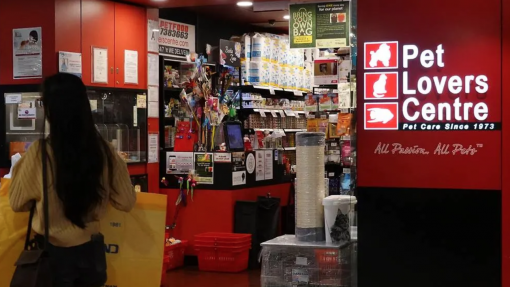
When pet services and products retailer Pet Lovers Centre introduced vending machines in various parts of Singapore sometime last year to give its customers added convenience, the move did not pan out well. (Photo: TODAY/Raj Nadarajan)
Pet Lovers Centre increased its customer receipts by 2.32 per cent between January and November 2019, compared with the same period the previous year.
“Singapore’s retail sales may be heading south at the moment, but experience has shown that sales tend to be resilient, or even push back (against the trend) when it comes to daily necessities like food, and pet food is no exception,” he said.
Another retailer that has found success in its omni-channel approach is home products retailer Iuiga, which started as an online store but later branched out into physical retail.
Its retail sales in the fourth quarter this year was 7 per cent higher than the previous quarter. Sales in the festive season have also been brisk, with its December revenue coming in 34 per cent higher than the same holiday period last year, and 50 per cent more than the average sales per month in 2019.
Its chief growth officer Jaslyn Chan said: “More than just a store where consumers can simply buy products, our stores double up as a showroom where customers can touch and feel products in store and buy (them) online.
“Showrooming has become increasingly prevalent on higher commitment products that are above a certain price threshold and works especially well with furniture and accompanying furnishings in Iuiga’s retail concept.”
Iuiga now has eight retail shops around Singapore. Like Pet Lovers Centre, it too had to find ways to adopt innovations that suited its strategy.
It initially experimented with in-store digital screens to showcase online exclusive products, but soon realised that shoppers responded to push notifications about the latter on its app.
Since their original purpose was no longer effective, Ms Chan said the screens were then repurposed to show product demonstration videos instead.
“As a young retailer, we have a lot of room (for improvement) in terms of visual merchandising and the retail shopping experience as a whole,” she said.
Source: CNA/hm (ml)
Full Article: https://www.channelnewsasia.com/news/singapore/the-big-read-retail-household-names-shrink-disappear-12216858


